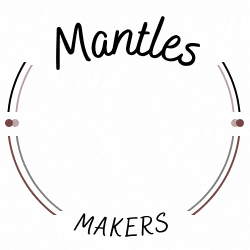Table of Contents
- What is Plinko? Discover the Game Mechanics, Tips, and Strategies
- Understanding the Basics of Plinko Mechanics
- The Role of the Board in Gameplay
- How Scoring Functions in Plinko
- The Impact of Balls and Drop Patterns
- Advanced Techniques to Enhance Your Play
What is Plinko? Discover the Game Mechanics, Tips, and Strategies
Engaging in the thrilling world of Plinko offers players an exhilarating experience marked by chance, strategy, and excitement. Originating from television game shows, this captivating activity has evolved is plinko game legit into a staple of both physical and digital gaming platforms. As participants drop disks, they navigate through a maze of pegs, leading to unexpected outcomes and opportunities for rewards.
At its core, the structure encourages players to examine how their disks interact with various obstacles, providing endless variations in gameplay. Each peg encountered alters the trajectory, making it imperative to analyze the layout before making any moves. A solid understanding of physics can enhance your performance, as predicting where the disks will land becomes crucial for maximizing potential returns.
Equally important is a thoughtful approach to bankroll management. Establishing clear limits will help you control spending while optimizing the excitement of each round. Pairing this with strategic placing of bets can significantly influence overall success. Players often benefit from observing prior rounds, identifying patterns that may enhance their decision-making process. By merging analytical thinking with a lively spirit, you can elevate your proficiency and enjoyment of this unique pastime.
Understanding the Basics of Plinko Mechanics
Plinko operates on a simple yet engaging principle involving a vertical board filled with pegs. When a disc is released from the top, it navigates through the pegs, bouncing off them and changing direction randomly on its way down. This randomness is fundamental to the dynamics of the experience, making it both unpredictable and exciting.
Players typically select a position along the top edge, determining where the disc will fall. Each position corresponds to different potential prizes or outcomes at the bottom. These outcomes vary in value, reflecting various rewards available to participants. Knowing the distribution of prizes is crucial, as some positions yield higher chances of landing on more lucrative slots.
The pegs strategically arranged on the board play a significant role in the trajectory. Adjustments in peg placement can alter the probability of landing on certain slots. Familiarity with typical bounce patterns can aid participants in making informed decisions about where to drop the disc, enhancing their overall experience.
Successful contenders often analyze historical data from past rounds, noting landing frequencies for specific entry points. This insight can shape their strategy, potentially improving their odds in future attempts. Additionally, understanding the construction of prizes and their impact on gameplay enhances engagement and choice-making.
Timing can also influence outcomes, especially in competitive settings where multiple players engage simultaneously. Being aware of others’ actions can provide hints about ideal dropping moments. Observing the board dynamics during gameplay assists in refining one’s approach, encouraging experimentation with various strategies.
In summary, mastering the essential components of this captivating activity hinges on a combination of luck and informed decision-making. By grasping the fundamentals, participants can elevate their game, maximizing enjoyment and exploring the potential for greater rewards.
The Role of the Board in Gameplay
The board serves as the core element in this engaging pursuit, influencing outcomes and enhancing player experience. Typically designed with a series of pegs and slots, its configuration directly determines how a chip behaves when dropped. Understanding its layout is crucial for maximizing potential rewards.
Pegs on the board play a pivotal role in altering a chip’s trajectory. Strategically placed, they create an unpredictable path, engaging players in the process. Each bounce can significantly shift a chip’s final destination, making observation of prior rounds beneficial. Noticing patterns can aid in predicting where the chip might land, even in an inherently random environment.
The slots at the board’s base represent reward zones. Knowing their placement can inform decisions on chip release points. Players should aim to release chips targeting higher-value slots while accounting for how pegs may divert the chip’s path. Understanding probabilities associated with various slots allows for smarter choices, making each attempt both calculated and adventurous.
Variability in board designs can also impact gameplay dynamics. Customized boards may introduce unique features or challenges. Familiarizing oneself with these specific characteristics enhances adaptability and overall performance. Engaging with different layouts can provide insights into diverse strategies applicable across various boards.
Ultimately, mastering the board’s intricacies deepens the engagement and can lead to more consistent success. Observational skills and strategic thinking are key components in navigating its complexities, transforming each round into an opportunity for insightful gameplay.
How Scoring Functions in Plinko
In this thrilling activity, scoring hinges on where the disc lands as it falls through a maze of pegs. Each potential landing spot corresponds to a designated point value. The excitement builds as players anticipate the final position of their disc, knowing it could yield high rewards or minimal points.
Point values are typically arranged in a triangular formation, with lower points located at the sides and higher values concentrated towards the center. This layout encourages players to aim for the center slots, maximizing potential winnings. Understanding the distribution of these values is essential for developing an effective approach.
When participating, consider the disc’s trajectory. The angle at which it is released can greatly influence its path. Aiming for the pegs can create deflections that guide it toward more lucrative slots. Mastering this skill requires practice; observing how other participants release their discs can offer valuable insights.
In many versions, multipliers may be introduced, enhancing the standard points earned. Landing in specific slots triggers these multipliers, significantly increasing overall scores. Identifying these slots is crucial: players should strategize their throws to optimize their chances of landing in these high-value areas.
Timing plays a vital role as well. Some players wait for moments when the board’s pegs show certain patterns, believing disc placement becomes more predictably lucrative. While randomness is a factor, careful observation may yield advantageous opportunities to place discs effectively.
Lastly, familiarizing oneself with the rules and scoring variations employed at different venues can enhance the overall experience. Each location may have unique scoring dynamics, influencing strategies and expected outcomes. Adaptability and knowledge of these differences can provide an edge in achieving higher scores.
The Impact of Balls and Drop Patterns
The behavior of spheres during their descent is crucial in determining outcomes in this engaging experience. Understanding how variations in drop patterns influence results can enhance overall enjoyment and strategic play. Each sphere interacts with pegs in unique ways, resulting in diverse trajectories.
One key aspect is the initial position from which a ball is released. Placing it on different spots alters the subsequent path and potential rewards. For instance, dropping from the far-left position typically leads to a greater likelihood of landing in lower prize zones, while starting closer to the center often increases chances of hitting higher-value slots.
Furthermore, the angle of descent plays a significant role. Each peg re-directs a sphere, creating unpredictable outcomes. Observing previous drops can yield insights into patterns formed by ball movements. Notably, certain areas of the board consistently generate favorable results based on past performances, emphasizing the significance of tracking these occurrences.
Timing also influences ball dynamics. Players should experiment with various release timings to discover optimal intervals for maximum rewards. Subtle adjustments in timing can lead to different interactions with pegs, ultimately affecting the final destination of the spheres.
As players gain experience, they should refine their approaches based on observable outcomes. Analyzing the results of multiple rounds provides valuable data that can guide future decisions. By identifying patterns in sphere behavior, participants enhance their ability to predict and influence results.
In summary, understanding the intricacies of sphere dynamics and drop positions enriches the experience. Emphasizing observation and experimentation can lead to improved performance and greater satisfaction, making the journey more rewarding.
Advanced Techniques to Enhance Your Play
To maximize success in this engaging activity, consider incorporating the following advanced methodologies:
- Understanding Payout Distribution: Analyze historical data or available statistics on payout percentages. Identify which slots yield higher rewards and adapt your dropping strategy accordingly.
- Drop Timing: Experiment with timing your drops. Certain intervals may lead to more advantageous outcomes based on observed patterns, especially during peak or off-peak play sessions.
- Customizing Your Approach: Tailor your dropping method based on personal observation. Adjust your angle of release to maximize the chances of landing in lucrative slots, considering the influence of gravity and board layout.
- Bankroll Management: Set limits for each session. Allocate a specific amount for play, ensuring sustainability and avoiding emotional betting. Utilize a stake strategy that allows for multiple attempts without significant losses.
- Utilize Bonuses and Promotions: Take advantage of available promotions or bonuses to extend your playing time. Engaging with platforms offering additional incentives can amplify returns without increasing personal investment.
- Community Insights: Participate in discussions with fellow enthusiasts. Sharing experiences can uncover unconventional methods or lesser-known insights that enhance performance.
- Observe Game Variations: Experiment with different versions of this activity. Each variant might present unique layouts and payout structures that could favor particular dropping styles.
- Pacing Your Play: Avoid marathon sessions that could cloud judgment. Regular breaks can enhance focus and allow for analytical assessment of previous drops, leading to informed future decisions.
Implementing these advanced techniques can significantly improve outcomes, making each drop more strategic and rewarding.

